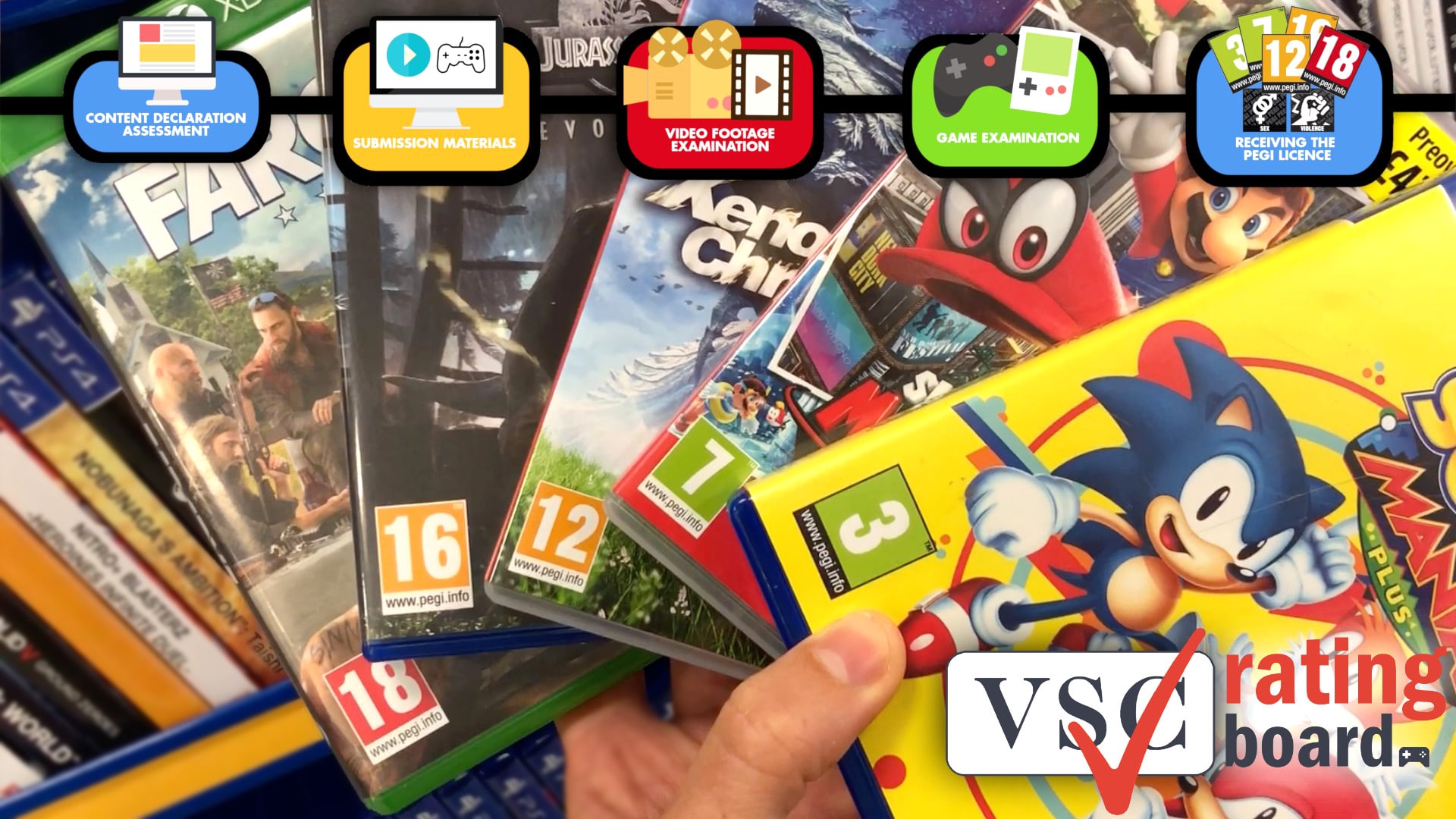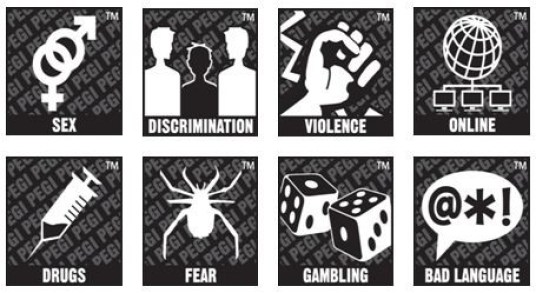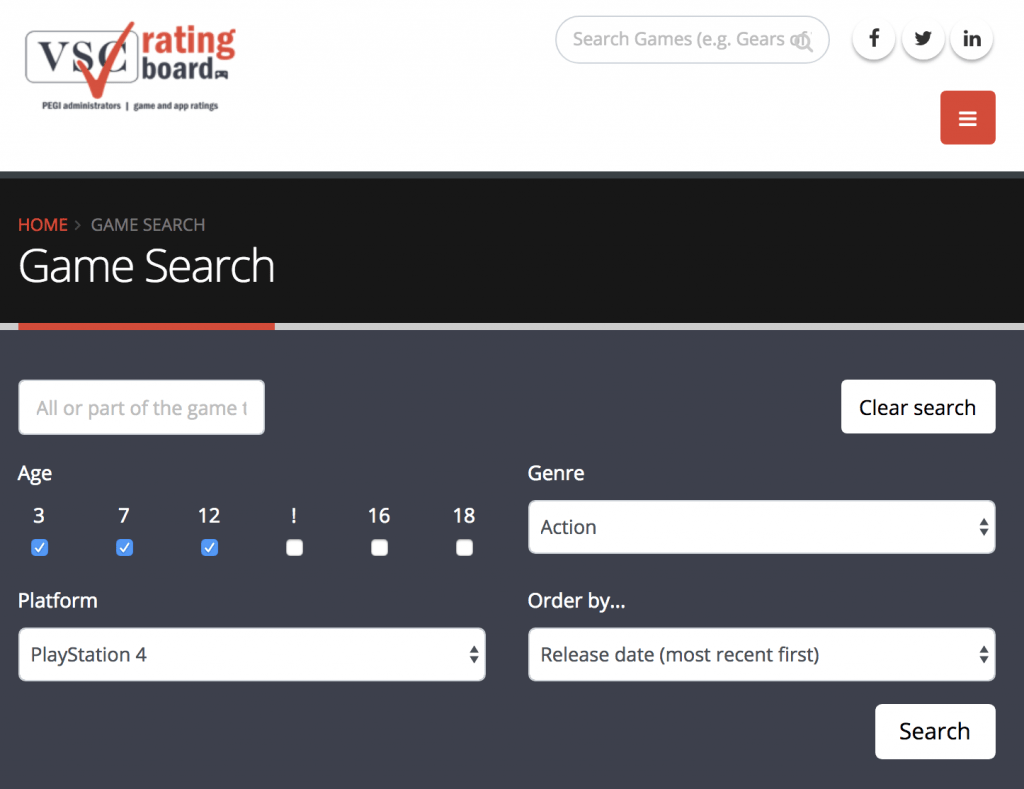PEGI Ratings Offer Parents Much More Than Age Limits

I've written and talked about the PEGI age ratings for a number of years. But this week, I got to see one being made at the VSC Rating Board for the very first time.
As you can see in the video, my visit is a behinds the scenes look at how the VSC rated all PEGI 12, 16 and 18 games. But more than that, I came away with a host of tips for how parents can make the most of this valuable resource.
Video game ratings have been the PEGI system of traffic lights for 3, 7, 12, 16 and 18 years olds for a number of years now. However, there are some really helpful aspects of these ratings that most parents don't know about.
This week I visited the VSC Rating Board who administer the PEGI ratings in the UK. They decide upon the PEGI 12, 16 and 18 rated games and are the legal statutory body for games released in the UK.
Game Rating LawPEGI stands for the Pan-European Game Information age rating system. UK law requires these ratings to physical games sold in shops. (Previously this was administered by the BBFC which is why you still see some old games with those badges.) Any shop or individual selling a PEGI 12 (or older) rated game to someone younger than that age can be prosecuted.
However, the law doesn't cover online or downloaded games. The major platform holders (Xbox, PlayStation and Nintendo) voluntarily (and very sensibly) apply PEGI ratings to games. Apps on the Google Play store also use the PEGI rating system.
Apple have their own age rating system so don't use PEGI and Steam, where you can download PC and Mac games use content tags rather than age limits to signify content.
How Games are RatedWhen a game is submitted to the VSC Rating Board the developer must have signed up to the PEGI code of conduct. While I was visiting, Nikki Adams, a video game examiner at the VSC, took me through the rating process:
 Content Declaration Assessment: Developer completes a questionnaire to declare in detail what the game includes: violence, bad language, sex, drug use and so on.
Submission Materials: The developer provides the VSC with evidence for their questionnaire answers. This includes video footage and a copy of the game with keys to access every aspect.
Content Declaration Assessment: Developer completes a questionnaire to declare in detail what the game includes: violence, bad language, sex, drug use and so on.
Submission Materials: The developer provides the VSC with evidence for their questionnaire answers. This includes video footage and a copy of the game with keys to access every aspect.
At this stage the developer may use the provisional PEGI rating on their promotional materials. Marked as provisional as it is subject to change.
Video Footage Examination: The footage is assessed and analysed for anything missed or misinterpreted from the questionnaire. Game Examination: The examiner plays the game itself. They test it for things that might not have appeared in the video submission, investigating physical effects of weapons and exploring different ways characters can interact. Receiving the PEGI Licence: After the examination, which takes 4-10 working days, the developer is sent the licence containing the rating symbols they must use. The PEGI RatingThe age rating shown on game boxes and online stores are advisory for the green 3 and 7 ages, but legally enforced for orange 12, 16 ages as well as the red 18 rating games for adults.

Along with the age ratings each game has one or more content descriptors which are displayed on the back of the box to show you what the age rating was triggered by.

The Age ratings and Descriptors are well documented here, so I won't go into more detail.
Additional Consumer InformationWhen the VSC rates a game its examiner makes a written report about the content in the game. These reports are made available to parents in the upcoming VSC Rating Board app (due in a couple of weeks), and via their website.
These reports contain three uniquely useful types of information:
- The PEGI Age Rating and Descriptors for the game.
- A brief overview of what the game is about and how it is played.
- A detailed account of the trigger points that cause the age rating. This describes in detail exactly what the violence, nudity, language or other aspects of the game are that required the age rating.
As you can see in the video, it's an efficient and varied team applying the ratings. Far from men in suits issuing degrees from large offices, that some parents I talk to imagine.
Many of the people I met during my visit played games themselves, but also many of them had children of their own. As VSC Director General, Ian Rice put it,
"I'm a parent myself, I have two young children. So I know what's going through parents' minds when a child asks for a game. Is it appropriate. Should I let them have it. Their friends have got it."
Parents and consumers are front and centre of many of the conversations and decision taken at the VSC. As he said,
"It's a great role to have because I know what we do in this office makes a real different to families."Parental Controls
Understanding the PEGI ratings aren't only good to guide your purchasing decisions but you can also setup your gaming consoles to automatically require a password before older games can be played. This is achieved in the Parental Settings or Parental Controls section of each console.
Alternative GamesThe PEGI ratings are also a good way to find games for younger players if they are not old enough for more mature titles.
For example, if your daughter wants to play Call of Duty but they are only 14, you can use the VSC website to search for all the recent "PlayStation 4" games "Action" games for PEGI 3, 7 and 12. This search then returns a really useful list of alternatives.

Another example is to enter search text as "Call of Duty" then select order by "Age Rating" this will show you all the Call of Duty games with the youngest rating first.
 Parents Questions
Parents Questions
Before I went to the VSC, I asked parents for questions they'd like me to ask on Twitter. Here's the top topics along with the VSC's answers:
Doktor Jest asks How are games rated that have additional content in the future?A: Any user generated content falls outside the rating criteria, and will be noted as such in the rating, as you see in games like Roblox. Any additional official content requires the developer to disclose any potential changes to the content questions they answered.
Steven Landray asks What if content is discovered in a game that wasn't disclosed when rated?A: The developer is legally required to disclose all content in the game. This includes any hidden or hard to access aspects. The VSC are often granted developer menus and "god modes" to ensure they have accessed everything.
Adam Grant asks Where violence is the primary gameplay how to you distinguish between mild and excessive?A: The violence drives the age rating higher if it is done to human-like characters (PEGI 12), when the violence appears realistic (PEGI 16), or if you can dismember or decapitate them before or after they have been killed (PEGI 18).
Danu asks Why are PEGI ratings not applied to iOS games?A: There is no legal requirement to apply PEGI ratings for non-physical games. Apple have chosen to use their own system rather than adopt PEGI in the UK or ESRB in the US.
David Green asks In non-linear games it's unlikely to see all the content, so how are they rated?A: In any game, open world or linear, the developer must disclose all content in the questionnaire that might effect the rating. This, combined with video footage and access to developer menus, enables the VSC to asses every aspect of a game, even if it is really huge.
Toby Thornton asks Is nudity or violence a bigger factor when rating?A: Each of the PEGI content descriptors have related implications in the overall age rating of a game. If a game included genitalia this would push it to a higher rating. Equally if a game enabled you to decapitate your enemies this would result in a higher age rating. The highest age rating triggered by any of the descriptors will be applied.





